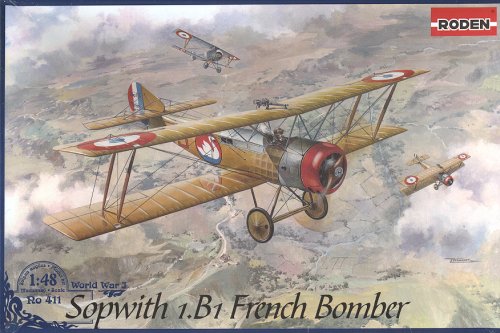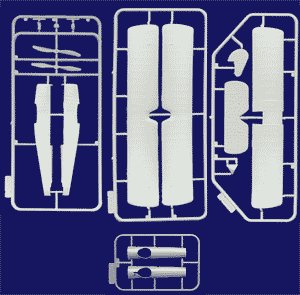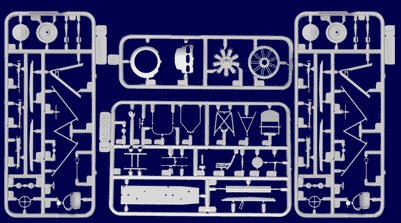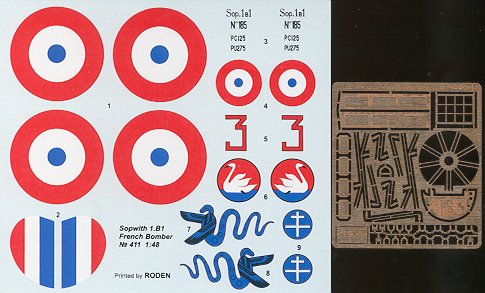
|
KIT: |
Roden 1/48 Sopwith 1.B1 |
|
KIT # |
411 |
|
PRICE: |
$19.98 (17.97 at Squadron) |
|
DECALS: |
two options |
|
REVIEWER: |
Scott Van Aken |
|
NOTES: |

|
HISTORY |
|
THE KIT |
 |
 |
This is the fourth boxing of the Sopwith Strutter kit, this time concentrating on the French-built single seat bomber version. What is a bit different is that this kit does not have the clear fuselage and flight surfaces that previous kits have had. I imagine that Roden found it easier and less hassle to use regular plastic. The kit is well molded in a tanish grey plastic and is relatively free from sink marks and ejector pin marks in the wrong place. What I did find on my example is that the upper wings had a great deal of flash on them that nearly fused the two parts together. It isn't seen on the image above as I pinched that from the Roden website. Cleaning it up should be easy enough. Included is an excellent and very finely done etched brass fret as you can see from the image below.
The only real option is a choice of
which upper wing will be used. Though there are additional upper fuselage
sections and props, those are not meant for this particular boxing.
Thanks to the W shaped cabane struts, these are in one
 piece, making the usual
assembly of the upper wing a great deal easier than having to deal with
many single struts. Since it is a single box biplane, it also means that
rigging is not that difficult, making this a good choice for those WWI
modelers who want something a bit more challenging.
piece, making the usual
assembly of the upper wing a great deal easier than having to deal with
many single struts. Since it is a single box biplane, it also means that
rigging is not that difficult, making this a good choice for those WWI
modelers who want something a bit more challenging.
As usual, the Roden instructions are superb, offering a well detailed construction sequence and giving color information throughout. Colors are in Humbrol or generic names. Basically, both markings options are in natural linen with aluminum metal panels. Decals re very well printed and quite glossy. Two aircraft are provided:
|
CONCLUSIONS |
Another super boxing of an interesting kit from Roden. If you have always wanted something a bit different from the usual fighters, then this one would be an excellent choice.
You can find this kit and many others at

If you would like your product reviewed fairly and fairly quickly by a site that has over 200,000 visitors a month, please contact me or see other details in the Note to Contributors.